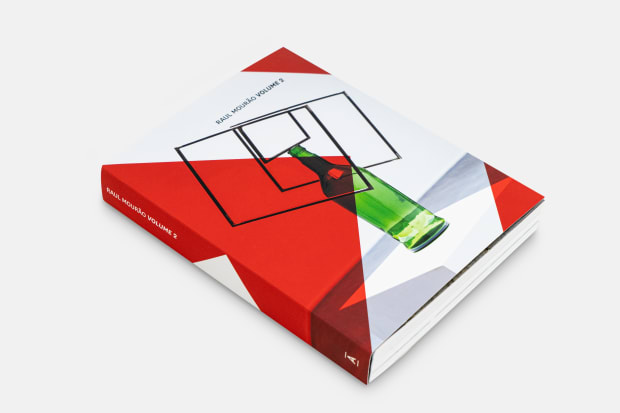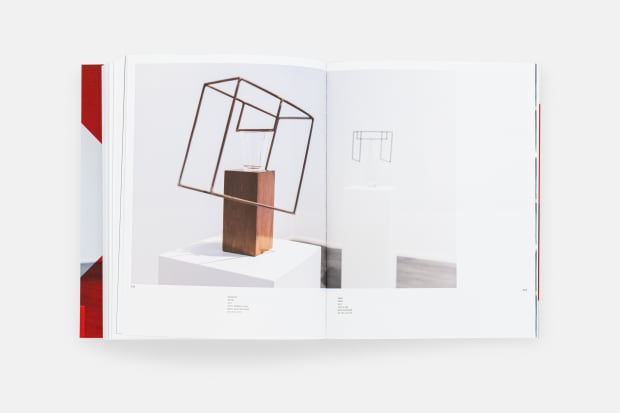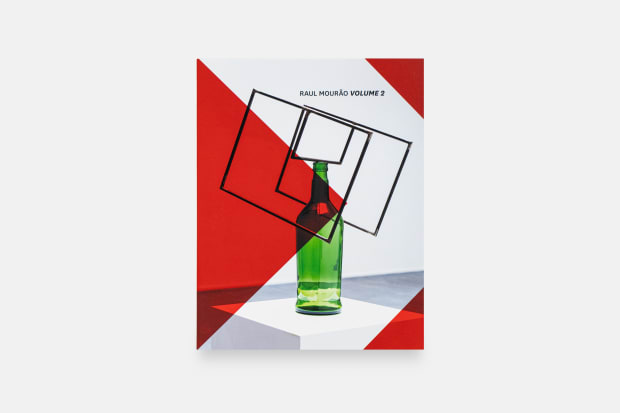-
raul mourão
empty head
april 27 – june 19, 2021
nara roesler new york
-
-
Nara Roesler is pleased to present Empty Head, Raul Mourão’s first solo exhibition in its New York gallery. The presentation brings a selection of recent works that synthesize and connect his formal investigations to a political critique of contemporary issues.
-
rebel
The Rebel series is the result of an investigation which Raul Mourão has continuously developed over the past two decades. Indeed one of his practice’s main focuses has revolved around the subject of urban structures, particularly those used to delineate and divide public and private spaces. With this, Mourão has explored the different visual and artistic possibilities embedded in fences and gates, in other words, in systems that function on dichotomies such as security versus threat, fullness versus emptiness, and inside versus outside.
-
-
-
Mourão granted dynamism to his large-scale corten steel sculptures, which gain movement when activated by the public. The works are made of two parts, one placed on top of the other in—seemingly precarious— equilibrium. Mourão emphasizes that the installations are interactive objects, rather than kinetic sculptures, as the public’s touch is fundamental to activating the structure. In turn, the audience’s engagement functions as a metaphor for the artist’s own involvement in the political and social matters of everyday life in Brazil.
The three new works from the Rebel series, which the artist has been developing since last year, distance themselves from the architectural grammar of earlier works, which often included forms that evoked that of marquees, or arches, for example. The Rebel sculptures take on a rather machinic lexicon, heavier in nature, made of more matter, and capable of producing greater visual and sonorous impact through their movement.
-
-
-
the new brazilian flag
On the occasion of Brazil’s 2018 carnival, one of the country’s most popular and traditional celebratory events, Raul Mourão conducted an artistic intervention at Arcos da Lapa, a landmark of the city of Rio de Janeiro. The Arcos are a token of Brazil’s colonial period, representing one of the most important architectural works of the time, due to its scale and function as a primary source of water supply in the city. The aqueduct is no longer active, and now serves as a point of entrance into one of Rio’s most famous neighborhoods, Lapa, known for staging bohemian, artistic and political happenings.
-

The New Brazilian Flag, 2018
mineral pigment on cotton photographic paper
60 x 60 cm | 23.6 x 23.6 in
-
Mourão famously engaged with the Brazilian flag, removing the blue central circle which is decorated with 27 stars representing the country’s states, as well as the sentence ‘ordem e progresso’—which translates to order and progress—a maxim extracted from the positivist doctrines of Auguste Comte. The altered flag was raised in Lapa, and subsequently photographed by the artist. In the following years, Mourão continued working with the motif in different forms, varying its size, as well as occasionally including more than one flag in the same composition.
According to the artist, the iconoclastic potency of the gesture remains relevant within the current context of the pandemic and the way in which the Brazilian government has addressed the situation. This phenomenon, whereby Mourão’s challenging practice is able to adapt and relate to both overarching and specific issues, is characteristic of the artist’s work.
-

The New Brazilian Flag # 3, 2019
fabric
135 x 197 cm | 53.1 x 77.6 in
-
-
bottles and glasses
This series of sculptures is developed as a result of Mourão’s interactive large-scale kinetic sculptures. The works are made of two different materials—for the base, he uses glass cups and bottles, while the upper structure is made of metal. The latter is to be activated by the public, in order to trigger its movement. Importantly, the glass objects employed by Mourão are part of the Brazilian everyday life. The bottles are those used to store alcoholic beverages—wine, beer or cachaça—while the glasses are the typical ones used to serve drinks in botecos, traditional street bars found throughout Brazilian cities.
-
-
The boteco is a token of Brazilian culture, its simplicity and accessibility allows for differences to converge— botecos are a point for encounter, for gathering, for exchanging ideas, for dialogue, and for dissimilarities to coexist. This series of sculptures by Raul Mourão also work to instill a greater sense of precariousness and instability, due to their size and material.
According to poet Eucanãa Ferraz: ‘The elegance of these works, minimal and expressive of their restrictive use of material resources summon the economy of a haicai; their serene and austere geometry is reminiscent of Volpi; their formally rigorous humility evokes the poetry of Manuel Bandeira. For those of us used to the large scale sculptures of Raul Mourão often shown in public spaces, and who expect his works to be yet another pointed response to the violence of contemporary urban experience, it is surprising to see that the response continues, but that now it goes in the opposite direction.’
-
-
bang bang
Bang Bang presents a composition of glass bottles forming the base for metal structures placed in precarious equilibrium and moving rhythmically from side to side. A sudden gunshot occurs, which we hear but do not see, shattering the glass objects. The fragments are propelled into the air, while the metal structures continue to swing for a fraction of a second—now without the support of the base—before falling to a standstill. The frame shifts to another setup, with the same elements yet disposed in a different arrangement, which is once again destroyed and interrupted by another bullet.
Bang Bang (2017) presents a series of records of several sculptures by Raul Mourão being destroyed consecutively. The video is filmed in a shooting range, where a cold light, a stable camera and the precision of the professional shooter’s shot, work to give the work a sense of objectivity or factuality. According to the artist, the particular attention to those details allows for greater emphasis on the proposed reflection on violence, whether referencing its generalized institutional form, or in a more specific address to the current context of systemic attacks against the freedom of expression of Brazilian artists.
Mourão explains that the idea for the work emerged in 2017, when the exhibition Queermuseu suffered numerous forms of censure by Brazilian society. The artist saw the moment as the first of many subsequent gestures by conservative movements to criticize and attempt to legislatively restrict artistic manifestations in the country. Bang Bang (2017) thus emerged within this context, as a form of expressing indignation in response to such actions.
-
-
“Raul has conceived and produced Bang Bang in the light of the events of 2017, when Brazilian contemporary art became the target of a fascist rage that is plaguing Brazil, forcing us to witness countless cases of freedom of expression censorship. The video can thus be read as a response to a moment where art has become a target of violent forces. But it should be noted that Bang Bang in no way illustrates this situation, which would render it merely propagandist.”
– Luisa Duarte
-
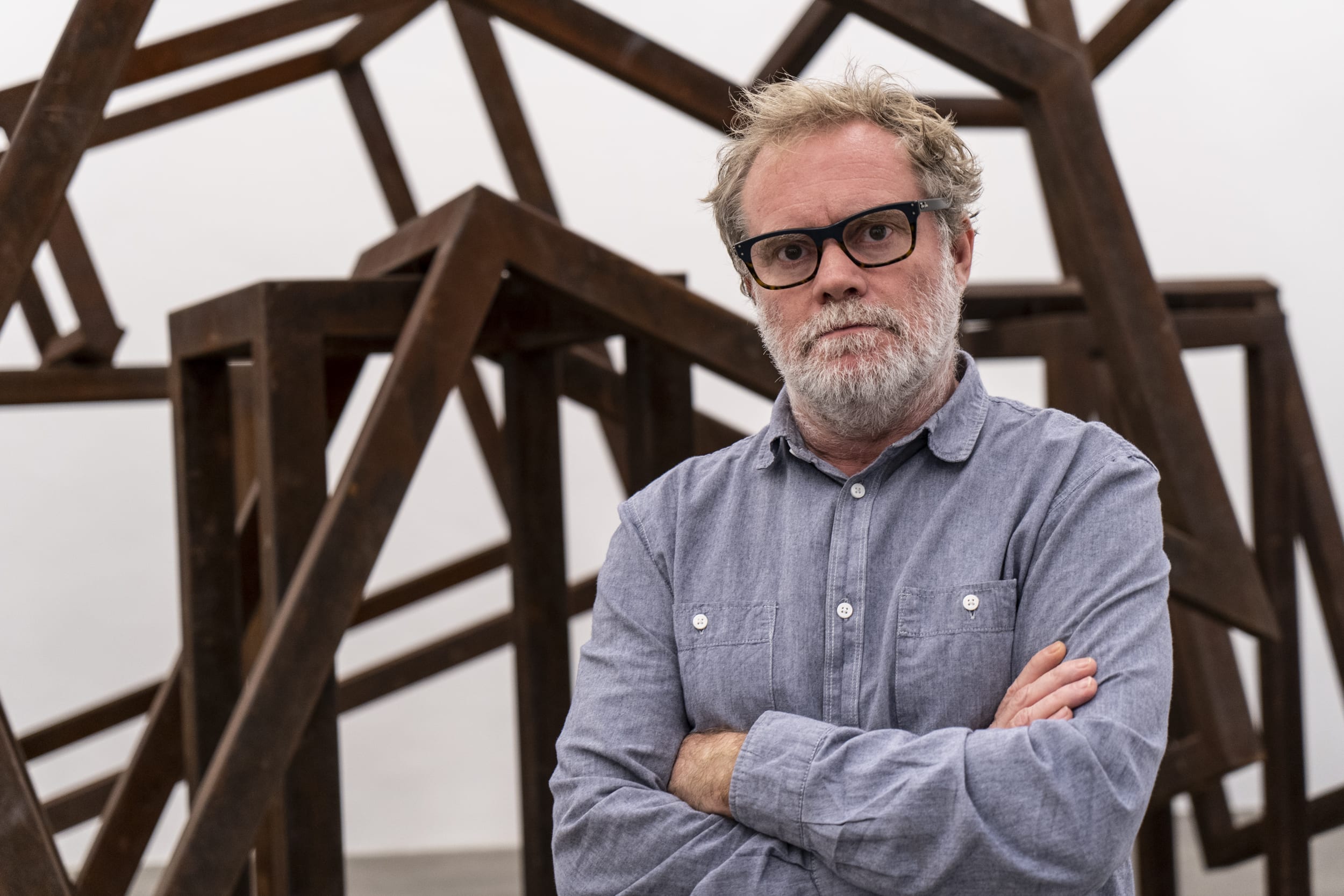
With a practice that spans across various media such as installation, sculpture, photography, video, drawing and performance, Raul Mourão is part of a generation that uniquely marked Rio’s artistic scene starting in the 1990s. Over time, Mourão developed a particular focus on subjects of everyday life, with a main concern for the urban space, its politics and social constructs, frequently permeating his work with a critical sense of humour. His visual vocabulary proposes displacements and redefinitions of familiar symbols and forms in contemporary society as a means of stimulating thought on the matters of place, urbanism and human interactions.
Mourão began his career in the second half of the 1980s. He began his work by investigating the visual symbology of architectonic safety devices in the urban landscape of Rio de Janeiro with structures such as window railings and security fences. This process resulted in a series titled Grades, which includes photography, video, sculptures, and installation works. Since 2010, the artist has expanded his research on security systems while deconstructing visual structures present in these forbidding apparatus, leading him to create his first audience-activated kinetic sculptures. In these large-format pieces, the artist establishes formal strategies that comment on urban violence while also seeking structural balance.
Raul Mourão was born in 1967, in Rio de Janeiro Brazil, where he lives and works. Main recent solo exhibitions and projects include: Fora/Dentro, at Museu da República (2018), in Rio de Janeiro, Brazil; Você está aqui, at Museu Brasileiro de Ecologia e Escultura (MuBE) (2016), in São Paulo, Brazil; Please Touch, at Bronx Museum (2015), in New York City, USA; Tração animal, at Museu de Arte Moderna do Rio de Janeiro (MAM Rio) (2012), in Rio de Janeiro, Brazil; Toque devagar, at Praça Tiradentes (2012), in Rio de Janeiro, Brazil. Main recent group exhibitions include: Coleções no MuBE: Dulce e João Carlos de Figueiredo Ferraz – Construções e geometrias, at Museu de Ecologia e Escultura (MuBE) (2019), in São Paulo, Brazil; Modos de ver o Brasil: Itaú Cultural 30 anos, at Oca (2017), in São Paulo, Brazil; Mana Seven, at Mana Contemporary (2016), in Miami, USA; Brasil, Beleza?! Contemporary Brazilian Sculpture, at Museum Beelden Aan Zee (2016), in Hague, The Netherlands; he was also featured in the 3rd Vancouver Biennial (2014-2016), Canada. His works are part of important permanent collections such as: Art Museum, Tempe, USA; Instituto Itaú Cultural, São Paulo, Brazil; Museu de Arte Contemporânea de Niterói (MAC-Niterói), Niterói, Brazil; Museu de Arte do Rio (MAR), Rio de Janeiro, Brazil; and Museu de Arte Moderna do Rio de Janeiro (MAM Rio), Rio de Janeiro, Brazil.
-



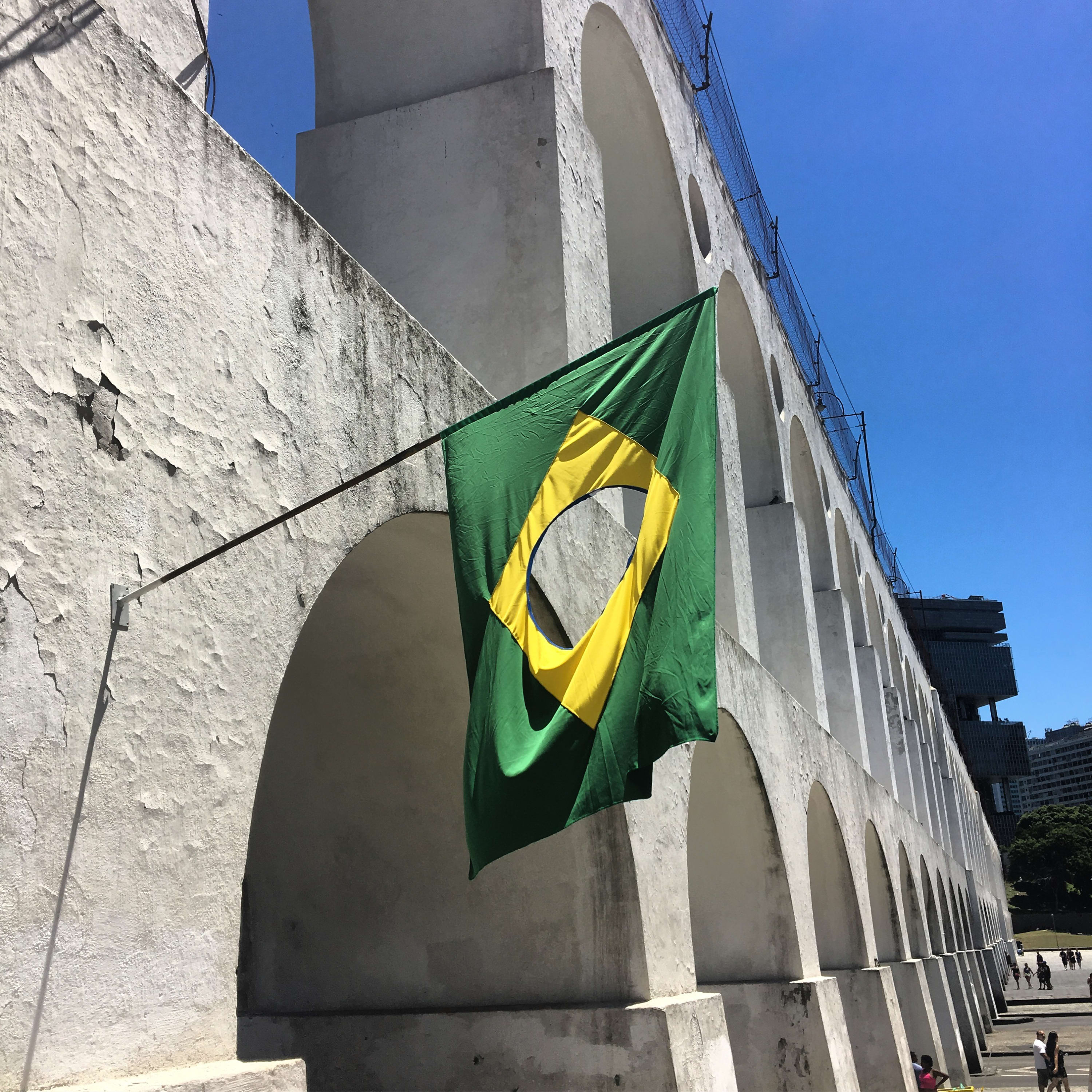
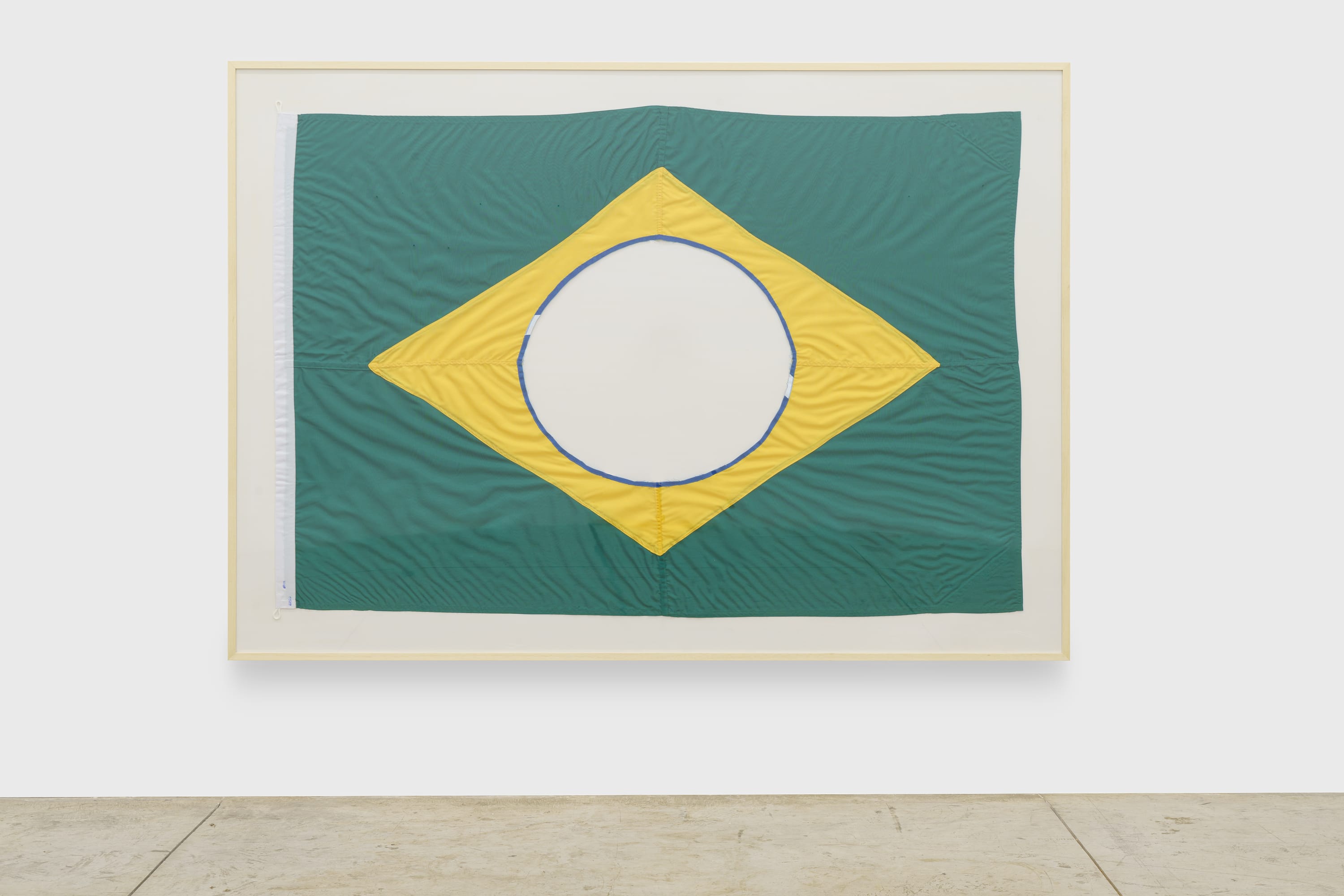





![Bang Bang # 01 [video stills], 2017 digital video and stereo soundtrack edition of 5 + 1 AP 6'](https://artlogic-res.cloudinary.com/w_740,c_limit,f_auto,fl_lossy,q_auto/ws-artlogicwebsite0088/usr/exhibitions/images/feature_panels/1312/bang-bang_raul-mourao_frames00767.jpg)
